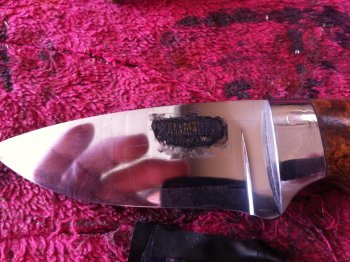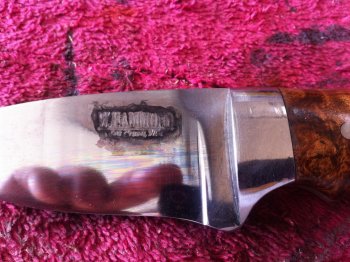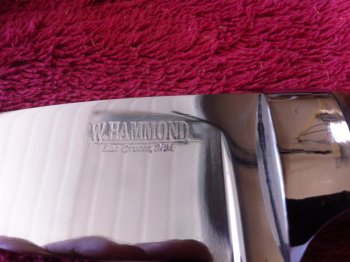wmhammond
Well-Known Member
I'm having trouble with my etching process. Below are photos of my process. Pic 1 is my set-up: Neg on the knife, Pos on the Q-tip with salt water. Stencil taped to the blade with electrical tape. Apply Q-tip to stencil for about 5 min. Second pic is the knife just after I peeled off the stencil - what a mess. Pic 3 is after I have wiped the knife with Acetone - Still a mess. Pic 4 is after I have buffed the blade on my buffer with a fairly aggressive compound and a fair amount of pressure. As you can see it cleans up pretty good but I just
don't think it is supposed to work this way and the mark isn't dark. What do you think? Thanks,
Wallace




don't think it is supposed to work this way and the mark isn't dark. What do you think? Thanks,
Wallace






